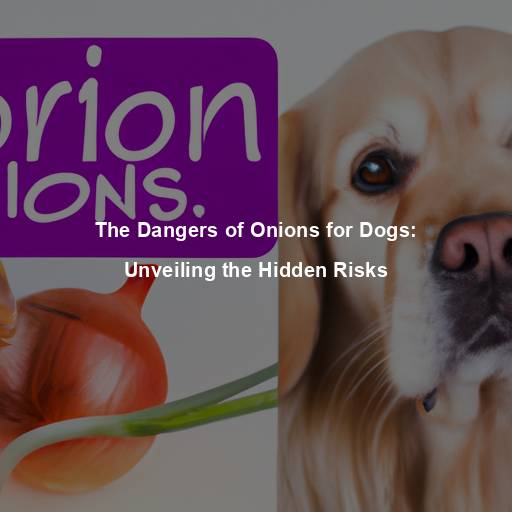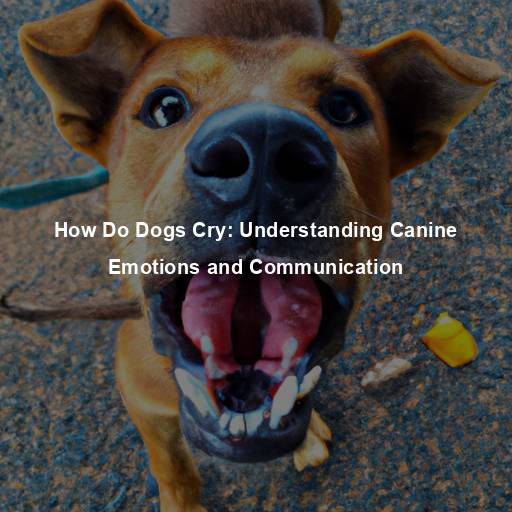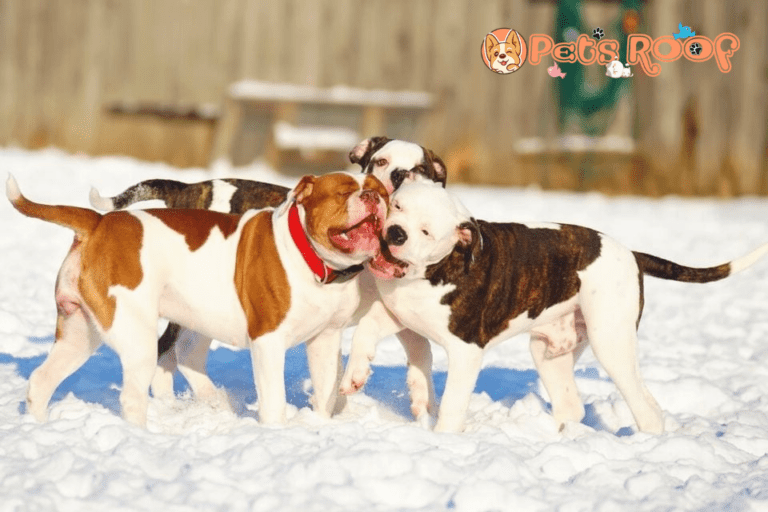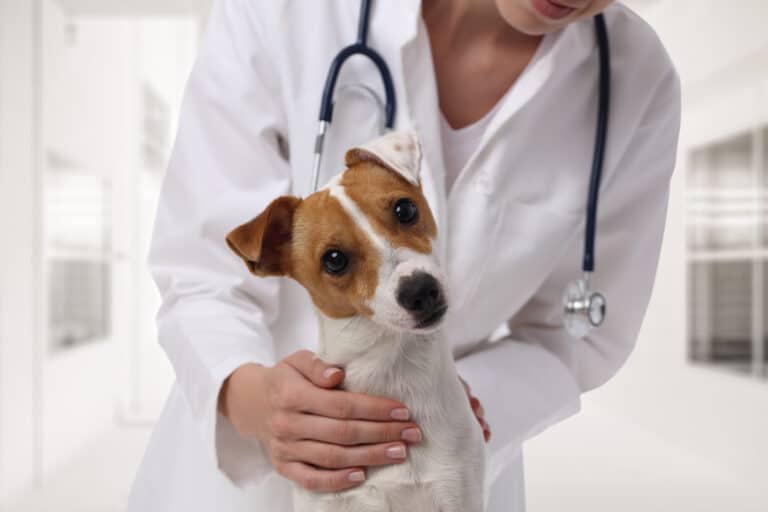The Dangers of Onions for Dogs: Unveiling the Hidden Risks
Last Updated on July 31, 2023 by Evan
Contents
- 1 Understanding the Canine Digestive System
- 2 Unveiling the Hidden Risks
- 3 The Hidden Onion Menace: Common Scenarios
- 4 Educating Pet Owners: Spreading Awareness
- 5 Safe Alternatives: Pleasing Your Pup’s Palate
- 6 Detecting and Treating Onion Toxicity in Dogs
- 7 Preventing Onion Poisoning: A Proactive Approach
- 8 The Curious Case of Allium Sensitivity: Individual Variations
- 9 Understanding the Mechanism: How Onions Affect Dogs
- 10 Final Thoughts: A Cautionary Tale
- 11 FAQs: Why dogs can’t eat onions
- 11.1 Why can’t dogs eat onions?
- 11.2 What happens if a dog eats onions?
- 11.3 How much onion is toxic to dogs?
- 11.4 Can onions in any form be safe for dogs?
- 11.5 Are all members of the onion family harmful to dogs?
- 11.6 What should I do if my dog accidentally ate onions?
- 11.7 Can dogs develop tolerance to onions over time?
Understanding the Canine Digestive System
Understanding why dogs are unable to consume onions requires an examination of their intricate digestive systems. Dogs, being omnivores, have adapted to a diet that involves both animal and plant-based foods. However, there exists a peculiar distinction between what may be harmless to humans and burdensome to our canine friends, and it is precisely within this divide that onions reside. Just as a precautionary measure, it is best to avoid feeding dogs any onions, as they can lead to detrimental health effects for our beloved furry allies.
The Culprit: Allium Family
Did you know that onions and their close relatives like garlic, shallots, and leeks contain a rather perplexing compound called N-propyl disulfide? Although this chemical poses no harm to us humans, it’s a completely different story for our furry pals – dogs. Ingesting even small amounts of this toxic substance can cause a burst of health problems in our four-legged friends, leaving pet owners in a constant state of worry.
Unveiling the Hidden Risks
Hemolytic Anemia: A Serious Concern
One can’t underestimate the seriousness of dogs consuming onions, as it can have dire consequences like the onset of hemolytic anemia. This condition arises when the toxic elements present in onions wreak havoc on the red blood cells, causing their breakdown. Consequently, our furry friends may exhibit signs of weakness, fatigue, visibly pale gums, and, in extreme scenarios, even collapse.
Gastrointestinal Upset: The Initial Warning Signs
When dogs consume onions, it can lead to some serious issues like anemia. One of the first signs you may notice is an upset stomach, which can manifest as vomiting, diarrhea, abdominal pain, and a decreased appetite. Don’t brush off these symptoms – they should always be taken seriously. If you think your furry friend has eaten onions or any foods related to the Allium family, it’s imperative to seek immediate help from your veterinarian.
Toxic Dose and Individual Sensitivity
In terms of our furry friends, onions can pose a bit of a perplexing puzzle. The impact they have on dogs is a bit of a mixed bag, as it depends on various factors like their size, overall well-being, and the quantity ingested. While small nibbles may not immediately set off alarm bells, repeatedly exposing our four-legged pals to these tear-inducing veggies or letting them chomp down on larger amounts can result in a buildup of toxicity. To stay on the safe side, it’s best to put a leash on any treats containing onions and keep them out of the reach of our canine companions.
The Hidden Onion Menace: Common Scenarios
Table Scraps and Leftovers
It’s no secret that many dog owners find it tempting to treat their four-legged companions to a taste of their own meals. However, not all human foods are suitable for our furry friends, and onions in particular should be strictly off-limits. It may come as a surprise, but even a small amount of onions in your dog’s diet can lead to dire consequences. Therefore, it’s crucial to be mindful and avoid unintentionally adding this harmful ingredient to your dog’s bowl.
Hidden Ingredients in Commercial Products
While we may diligently check the ingredient list of our dog’s food, it’s essential to extend this scrutiny to other products as well. Many commercial items, such as baby food, gravies, and even some pet medications, can contain onion powder or derivatives. Always read labels carefully and consult with your veterinarian if you’re unsure about a specific product.
The Dangers of Cooked Onions
It’s a common misconception that cooking onions reduces their toxicity for dogs. Surprisingly, research has shown that certain cooking methods like dehydration can actually intensify the harmful compounds present in onions. So, whether they’re raw, cooked, powdered, or in any other form, it’s crucial to keep onions out of reach for our furry friends to ensure their well-being.
Educating Pet Owners: Spreading Awareness
Raising Awareness in the Pet Community
As responsible pet owners, it is our duty to spread awareness about the dangers of onions and other toxic foods for dogs. Sharing information with fellow pet owners, participating in online forums, and engaging with local animal welfare organizations can help ensure that this vital knowledge reaches as many people as possible.
The Role of Veterinarians
Veterinarians play a crucial role in educating pet owners about potential hazards and providing guidance on proper nutrition. Regular check-ups and open communication with your veterinarian can help you make informed decisions regarding your dog’s diet and overall well-being.
Safe Alternatives: Pleasing Your Pup’s Palate
Focus on Canine-Safe Foods
When it comes to finding canine-friendly fare, the pungent allure of onions and their Allium relatives might just have to take a backseat. But fret not, for there exists a vast array of wholesome and scrumptious victuals that you and your furry friend can revel in together. Luscious cuts of lean meats, carefully cooked sans bones, can tantalize their taste buds, while the crisp juiciness of apples and blueberries serves as a fruity indulgence. And why not let your pooch dabble in the vibrant world of veggies, with the crunchy satisfaction of carrots and green beans?
Homemade Treats: A Flavourful Solution
If you find joy in whipping up wholesome goodies for your beloved four-legged companion, there are countless delectable recipes out there that steer clear of any potentially harmful substances. Whether it’s scrumptious peanut butter and banana biscuits or delightful pumpkin and oatmeal bites, you can satisfy your pup’s cravings while keeping their well-being intact. Embrace the art of culinary canine delights and pamper your furry friend with safe and nutritious treats that will leave them begging for more.
Absorption and Metabolism
If your pooch happens to munch on some onions, it’s important to be aware of the potential consequences. The harmful components in onions make a speedy journey into their bloodstream, wreaking havoc on those precious red blood cells. This unfortunate chain reaction can lead to oxidative havoc and disrupt the usual functioning of those little heroes.
Hemoglobin Breakdown
Onions, those seemingly innocent kitchen staples, can actually unleash a wave of chaos within our bodies. Hidden within their layers lurk toxic compounds that set off a perplexing chain of events. These compounds have the power to dismantle hemoglobin, that noble protein vital for transporting oxygen in our bloodstream. As this destruction unfolds, a burst of harmful byproducts, like reactive oxygen species, join the scene, adding further disruption by attacking our crimson-hued blood cells.
Heinz Body Formation
Another consequence of onion toxicity is the formation of Heinz bodies. Heinz bodies are abnormal structures that attach to the surface of red blood cells, leading to their premature destruction. As a result, the dog’s body struggles to maintain an adequate population of functioning red blood cells, leading to anemia.
Detecting and Treating Onion Toxicity in Dogs
Recognizing the Symptoms
Spotting onion toxicity in dogs can present a perplexing challenge, as the symptoms may not unfurl in an instant following ingestion. However, by remaining keen and alert, you can unravel the enigmatic puzzle of identifying potential indicators of onion toxicity. Beware of commonplace signs that might pepper this mysterious malady, such as:
Feeling tired and lacking energy? You’re not alone. Many of us have experienced moments of weakness and lethargy, leaving us perplexed and searching for answers. But fear not, there are ways to combat these feelings and find that burst of vitality you’ve been longing for.
– Pale gums
In the fast-paced world we live in, it’s no wonder that our breathing seems to match the intensity. The frantic pace of our daily lives, filled with endless deadlines and never-ending to-do lists, leaves us gasping for air. It’s as if our lungs are struggling to keep up with the ever-increasing demands of modern society. Though it may seem perplexing, this rapid breathing is simply a physiological response to the chaotic nature of our existence.
When you notice a change in the hue of your urine, specifically a darker shade, it can leave you feeling puzzled and concerned. This perceptible alteration in color can vary from a deep amber to an almost brownish tint, leaving us perplexed about its potential causes. While it may be indicative of various underlying factors, it’s crucial to seek medical advice to alleviate any uncertainties and ensure your well-being.
Have you ever felt your heart pounding like a wild animal in your chest, racing at a speed that seems inexplicable? That electrifying surge of adrenaline, propelling your pulse into a whirlwind of frenzy, leaving you both captivated and bewildered. It’s as if your heart has its own mind, forging a beat that flutters with an intensity that defies logic. It’s a mesmerizing dance between the unpredictable rhythm of life and the bewildering symphony of your own body.
Have you ever noticed a sudden, unexpected change in the color of your skin and eyes, almost like a vibrant burst of yellow? This enigmatic phenomenon, known as jaundice, has puzzled and perplexed medical professionals and patients alike for centuries. With its unpredictable nature and elusive origins, jaundice remains a captivating yet perplexing condition that continues to baffle experts in the field. So, if you find yourself caught in the perplexing grip of jaundice, fear not, as the medical community tirelessly works to unlock the mysteries surrounding this burst of yellow.
Sometimes, in extreme situations, there can be a collapse or a temporary loss of consciousness. These occurrences can be quite perplexing and unexpected, leaving individuals feeling disoriented and unsure of what just happened. It is essential to seek medical attention if such incidents occur, as they can be indicative of underlying health concerns that need to be addressed promptly. It is crucial to stay vigilant and take proper care of our well-being to prevent any form of sudden incapacitation.
If you notice any of these symptoms in your dog and suspect onion ingestion, seek immediate veterinary assistance.
Diagnosis and Treatment
When you take your beloved furry friend to the veterinary clinic, prepare for an exhilarating rollercoaster of investigative procedures. The meticulous veterinarians will embark on a journey of discovery, conducting a comprehensive physical examination and suggesting various mind-boggling diagnostic tests, including the enigmatic complete blood count (CBC) and cryptic biochemistry panel. These enigmatic exams aid in unraveling the enigma of your dog’s wellbeing, unraveling the cryptic damage done, ultimately guiding the perplexing path towards the most suitable treatment plan.
When it comes to dealing with the troublesome consequences of onion toxicity, there are various treatment options available. These may encompass both medical and non-medical approaches, tailored to the severity of the condition as well as the individual’s unique circumstances. From administering appropriate medications to employing supportive measures like hydration and rest, a comprehensive approach is key to confronting the perplexing implications of onion toxicity head-on. Seeking guidance from healthcare professionals is paramount to ensure the most effective and personalized course of action.
In case of recent ingestion, it may be necessary to induce vomiting as a precautionary measure. However, it is crucial to consult a healthcare professional before taking any action.
In an effort to mitigate the impact of contaminants, the application of activated charcoal has garnered attention for its potential in impeding the absorption of harmful substances. This technique is poised to offer a glimmer of hope in a world perplexed by the adverse effects of toxins, as it presents a burst of possibility for safeguarding our well-being. As scientists delve deeper into this enigmatic realm, the administration of activated charcoal emerges as a perplexing yet promising avenue for preventing the further dissemination of toxins within our bodies. Embracing this burgeoning field holds the potential to unlock a myriad of health benefits, ultimately shaping a safer and more resilient future.
Quench your body’s thirst and flush away those unwanted toxins with the power of intravenous fluid therapy, an infusion of rejuvenation like no other. Rehydrate your cells from within, providing a burst of vitality to leave you feeling refreshed and invigorated. Say goodbye to the perplexity of dehydration and usher in a new wave of wellness with this cutting-edge treatment. Indulge in the splendor of detoxification as you embrace the burstiness of optimal hydration.
When faced with the daunting challenge of severe anemia, one potential solution that doctors may turn to is the enigmatic practice of blood transfusion. While this medical intervention can be both remarkable and perplexing, it holds the power to restore vitality and strength to those who find themselves in dire circumstances. Harnessing the enigmatic properties of human blood, this procedure offers both hope and a sense of wonder in the face of life-threatening conditions.
With an unwavering focus on well-being, our expert team keeps a watchful eye on crucial indicators like vital signs and blood parameters. Through meticulous monitoring, we ensure that every facet of your health is carefully examined, leaving no room for ambiguity or uncertainty. Rest assured, our dedication to precision is unparalleled, ensuring your safety and peace of mind.
When it comes to providing comprehensive care, it’s important to address not only the immediate needs of individuals but also any additional symptoms or complications that may arise. By implementing supportive measures, we can ensure that all aspects of a person’s health are taken into consideration and managed effectively. This approach aims to provide a holistic and well-rounded approach to caregiving, addressing the uniqueness of each individual’s situation with attentiveness and expertise.
Preventing Onion Poisoning: A Proactive Approach
Kitchen Safety Measures
Ensuring the well-being of our beloved canines is at the forefront of every responsible pet owner’s mind. One crucial aspect of this duty involves navigating the treacherous world of culinary endeavors and the potential hazards lurking in our very kitchens. As perplexing as it may seem, safeguarding our furry friends from the perils of accidental onion ingestion demands our utmost attention and vigilance. Fear not, for we have compiled a myriad of measures that will undoubtedly help you create a haven of kitchen safety, shielding your canine companion from these delectably dangerous onions.
When it comes to keeping your furry friends safe, there’s one veggie family that should be handled with extra caution – the Allium family. From onions to garlic, these flavorful bulbs can pose a potential threat to your beloved canine. To ensure the well-being of your four-legged companion, store these pungent plants in a designated area that is securely out of your dog’s reach. By taking this simple precaution, you’ll add an extra layer of protection and peace of mind to your pet parenting journey.
When it comes to managing the remnants of your onion slicing adventures, it’s essential to adopt a secure disposal strategy. Safeguard the integrity of your surroundings by sealing onion peels and scraps in an airtight container or refuse bag. By taking this simple but crucial step, you can bid farewell to the pungent aroma and minimize any potential mess.
When it comes to dealing with spills or leftovers from dishes that include onions, it’s crucial to tackle the situation promptly and efficiently. Wiping away any traces or remnants of these pungent vegetables should be prioritized to avoid any long-lasting odors or potential stains. By taking immediate action, you can ensure a fresh and pristine environment in your kitchen or dining area.
Educating Family Members and Visitors
Keeping your beloved canine companion safe and healthy should always be a top priority. It is crucial to ensure that every member of your household, as well as any visitors, is well-informed about the potential hazards of onions for dogs. Be sure to emphasize the importance of refraining from sharing any meals or snacks with your furry friend, particularly those that may contain onions or other toxic ingredients. By creating awareness and promoting responsible pet care, we can prevent any unfortunate mishaps and keep our four-legged companions blissfully onion-free.
Reading Labels and Ingredient Lists
When it comes to buying pet essentials like food and treats, taking a closer look at the labels and ingredients is paramount. It’s important to keep an eye out for the inclusion of onions, onion powder, and other members of the Allium family. Should any doubts linger regarding the safety of a specific product, seeking guidance from your trusted veterinarian is the surefire way to go.
Alternative Flavor Enhancers
When it comes to spicing up your furry friend’s food, thinking beyond onions can be both a wise and exciting choice. Why not explore wholesome options such as low-sodium broth or specially tailored seasonings made just for dogs? However, before diving into this culinary expedition, it is crucial to prioritize thorough research and confirm the safety and suitability of any new elements you plan to introduce to your pup’s diet.
The Curious Case of Allium Sensitivity: Individual Variations
While onions are generally toxic to dogs, it’s important to acknowledge that individual sensitivities can vary. Some dogs may exhibit severe symptoms even after ingesting small amounts, while others may tolerate onions to a certain extent without apparent harm. However, it’s crucial to remember that the potential risks outweigh any potential benefits, and it’s best to avoid onions altogether.
Understanding the Mechanism: How Onions Affect Dogs
Final Thoughts: A Cautionary Tale
It’s hard to digest that something as common as onions can be perilous for our furry friends. These aromatic veggies, often a key ingredient in human cuisine, may seem harmless, but in reality, they pose a significant threat to our canine companions. Onions pack a toxic punch, harboring compounds that can wreak havoc on their precious health, causing everything from digestive distress to severe cases of a condition called hemolytic anemia. It’s crucial that we, as devoted pet owners, are well-informed about the hidden dangers lurking in our kitchen and take proactive measures to shield our dogs from the perils of onion poisoning.
Disclaimer: This article is for informational purposes only and should not replace professional veterinary advice. If you believe your dog has ingested onions or is experiencing any health issues, consult with a veterinarian immediately.
FAQs: Why dogs can’t eat onions
Why can’t dogs eat onions?
If you’ve ever caught your furry friend eyeing your plate of onions, it’s crucial to understand the potential dangers lurking beneath their innocent gaze. Onions, seemingly harmless to us, harbor a hidden arsenal of organosulfides, like the mouthful of tongue-twister, n-propyl disulfide and thiosulphate. These compounds hold a toxic secret when it comes to our beloved canines. When ingested, they wickedly trigger a domino effect of hemolytic anemia, where the body’s very own red blood cells crumble like a delicate soufflé. With weakened bodies, dogs may succumb to vexing symptoms such as bouts of weakness, turbulent bouts of vomiting and diarrhea, appetite that wilts away like a forgotten bouquet, and the terrifying prospect of crucial organs risking collateral damage. Let’s ensure our pets steer clear of this perilous dietary abyss, for their health and well-being depend on it.
What happens if a dog eats onions?
If a dog ingests onions or any food containing them, it can lead to damage to their red blood cells. The toxic compounds present in onions can cause the red blood cells to rupture and become damaged, leading to a condition known as hemolytic anemia. Symptoms may not be immediately noticeable, but over time, the dog may become lethargic, experience pale gums, increased breathing and heart rate, and may even collapse. Without proper treatment, this condition can be life-threatening for a dog.
How much onion is toxic to dogs?
The toxicity of onions for dogs depends on the amount ingested relative to the dog’s body weight. As a general rule of thumb, any amount of onion can be harmful to dogs. Even small quantities, such as onions present in sauces, seasonings, or cooked dishes, can potentially cause health issues. It is best to avoid giving dogs any form of onion, be it raw, cooked, powdered, or as an ingredient in any prepared food.
Can onions in any form be safe for dogs?
Onions, in all their various states – be it fresh, cooked, powdered, or dehydrated – pose a considerable threat to our canine companions. The intricate array of toxic compounds lurking within onions remain resilient even when subjected to cooking or processing. Curiously enough, even a sprinkling of onion, discreetly hidden amidst other ingredients, can still bring about perilous consequences for our furry friends. Taking a cautious approach and steering clear of any doggy dish with onions seems to be the safest course of action.
Are all members of the onion family harmful to dogs?
Yes, all members of the onion family, including onions, shallots, chives, and garlic, are toxic to dogs. Each of these plants contains varying levels of the harmful compounds, which can lead to hemolytic anemia when ingested by dogs. It is crucial to be aware of this and ensure that dogs do not have access to any food items containing these ingredients.
What should I do if my dog accidentally ate onions?
If you suspect or know that your dog has ingested onions, it is essential to seek veterinary assistance immediately. Contact your veterinarian or a pet poison control hotline for guidance. They will provide you with specific instructions based on your dog’s size, the amount of onion consumed, and any symptoms displayed. Prompt medical attention is crucial to minimize the potential harm caused by onion toxicity.
Can dogs develop tolerance to onions over time?
Contrary to popular belief, dogs do not build up a tolerance to the harmful properties of onions as time goes on. In reality, continuous exposure or ingestion of onions can cause a progressive deterioration of a dog’s red blood cells, posing a grave threat to their overall health. This is why it is crucial to be steadfast in preventing dogs from consuming any form of onion throughout their entire life, guaranteeing their optimal welfare and minimizing the chances of any perplexing health issues.







